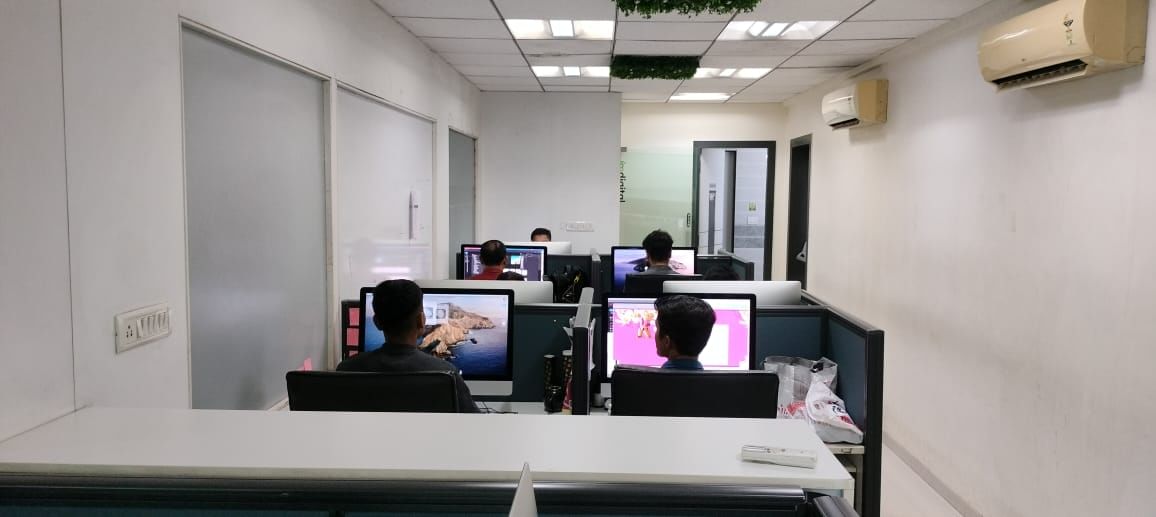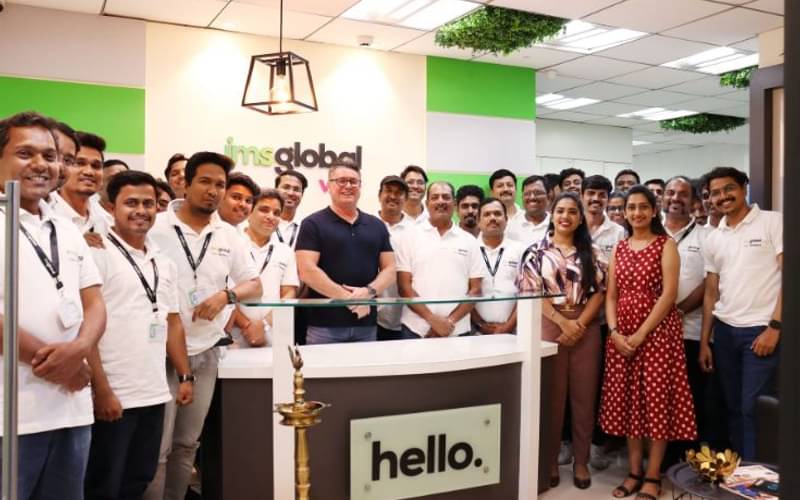Pre-media: The way forward for brands to achieve packaging goals
In WhatPackaging?’s pre-media series, we put the spotlight on Abraham Prabhakar, the managing director of IMSGlobal Asia. He says, “The role of a pre-media agency is crucial in creating or modifying designs to ensure they fit within the constraints of printing and packaging processes”
13 Nov 2023 | By Abhay Avadhani
Abhay Avadhani (AA): First things first. What are the design challenges you discern which are based on today’s consumer behaviour?
Abraham Prabhakar (AP): In today's fast-paced, multi-channel environment, designs must be agile enough to capture consumer attention and work across various platforms. They must also have longevity and relevance to withstand changing trends and consumer behaviours. By addressing these challenges, brands can create designs that engage consumers, foster brand recognition and loyalty, and achieve business success in a dynamic marketplace.
AA: What, according to you, is the reason for the surge in the importance of pre-media in publication as well as packaging?
AP: Designers have worked in isolation, often lacking awareness of print limitations and legal mandates. This has led to a growing demand for print production managers (PPM’s) globally, as they provide expertise in various areas. PMAs play a crucial role in assessing the reproducibility of designs.
AA: What are the solutions that a PMA provides?
AP: PMAs ensure that designs can be successfully translated into printed materials, taking into account technical constraints and requirements. By collaborating with designers, PMAs help identify and address any potential issues upfront, saving time and resources.
AA: How do PMAs achieve this?
AP: PMAs are responsible for maintaining brand consistency across different contexts. They ensure that the same colours, brand assets, and design elements are accurately reproduced, regardless of the printing location, substrate, or timeframe. The PMAs can also evaluate and suggest the optimal number of printing stations, reducing unnecessary expenses. Additionally, through techniques like design to value operations, PMAs identify opportunities for cost savings without compromising on quality or brand standards.
AA: What is the technology at the core of any pre-media company that makes it successful?
AP: We consider technology to be a crucial aspect of a pre-media company, and from the very beginning, IMSGlobal has made significant investments in this area.
AA: There are a slew of small and big software companies introducing new pre-media software everyday. How does one know what to buy?
AP: After experimenting with off-the-shelf software solutions, we realised that a “one-size-fits-all” approach did not meet our specific needs. Consequently, IMSGlobal collaborated closely with software architects to develop our own proprietary management information system (MIS). This system enables live job tracking, approvals and generates multiple reports that aid in identifying and addressing any shortcomings, thereby helping us maintain our service level agreements (SLA).
AA: A good design shall not suffice if it is not reproducible in the packaging form.
AP: Not all designers are aware of print limitations, leading to designs that are not easily reproducible. Technical considerations such as minimum dot and font size, minimum line thickness, and the number of colour stations are often overlooked. This oversight can result in difficulties managing colours and last-minute complications, leading to delays.

Abraham Prabhakar: Not all designers are aware of print limitations, leading to designs that are not easily reproducible
AA: Please explain more.
AP: At IMSGlobal, we involve our print production managers (PPM) right from the design stage to avoid surprises later in the process. Additionally, through our close association with our sister company, Vibe Creative, the designers have also adopted standard codes and practices, further ensuring print feasibility and smooth production.
AA: What role does pre-media play in achieving certain parameters like; harmonisation of colours across range, reproducing the same output across substrates like shrink sleeve and label, and addressing distortion parameters while executing the designs?
AP: Brand colours are of utmost importance and should not be altered. Whether it's labels, sleeves, shelf-ready packaging (SRP), or cartons, achieving the exact same Pantone colours is crucial. Consequently, artwork must be adjusted to ensure accurate colour reproduction. It is important to note that print specifications can vary among different converters, necessitating calibration of artworks for each setup. A pre-media agency possesses printer specifications for each converter and uses this information to produce a harmonised output, maintaining consistent brand colours across various packaging materials.
AA: Are brands using flexo better?
AP: In the past, brands commonly relied on offset printing for labels. However, the advent of digital flexo plates and online post-press operations such as foiling, embossing and die-cutting have led many brands to shift towards it.
AA: Has it led you to any design innovation in packaging?
AP: Flexo offers several advantages, including the ability to provide roll-form output that can be directly fed to an applicator. This facilitates precise and accurate label transfer onto the substrate, streamlining the labelling process for brands.
AA: How is flexo competing with gravure on things like speed to market?
AP: Flexo outperforms gravure in terms of speed to market and sustainability. Flexo plates can be produced in a few hours, while gravure cylinders take days. Flexo plates require less storage space and can last as long as gravure cylinders when cleaned and stored properly.
AA: What about the sustainability quotient?
AP: The flexo platemaking process involves fewer toxic chemicals compared to gravure. Flexo plates are also easily amendable. Consequently, there has been an increase in flexo operators in the country, with traditional gravure operators establishing their own flexo divisions. Flexo presses and plate makers can be found in most tier-one and tier-two cities. However, the shift from gravure to flexo is less pronounced in India compared to Europe and the US.
AA: What are the potential areas of automation in the pre-media segment?
AP: At IMSGlobal, we have implemented processes for automating artworks specifically for aerosol cans and secondary labels. By utilising a briefing document, a template, and an Excel sheet, we can generate multiple artworks within minutes. This significantly reduces the time that would have been spent on manual creation.

Abraham Prabhakar, managing director of IMSGlobal Asia
Abraham Prabhakar - How consumer behaviour impacts the pre-media segment for packaging
Consumer behaviour plays a significant role in dictating various aspects related to pre-media agency's work.
Design process
Consumer behaviour influences the design process by tailoring designs to the target audience. Factors such as age, gender, region, and culture impact consumer preferences and expectations. Understanding these preferences helps pre-media agencies create designs that resonate with the intended consumers, increasing the likelihood of engagement and purchase.
Packaging procurement
Consumer’s demand for sustainability drives pre-media agencies to prioritise environment-friendly packaging solutions. Brands aim to establish themselves as environmentally conscious, and meet consumer expectations for eco-friendly packaging. As a result, pre-media agencies need to consider sustainable materials and practices in the procurement of packaging components to align with consumer values.
Legal metrology
Government regulations regarding packaging, including the display of certain critical information, are often based on consumer behaviours and requirements. Pre-media agencies must stay updated with the latest mandates to ensure compliance while producing artworks. Adhering to legal metrology guidelines ensures that packaging meets regulatory standards, and provides consumers with the information they seek.
Brand loyalty
Consumer behaviour and brand loyalty are interconnected. Pre-media agencies play a crucial role in maintaining the harmony of brand colours, assets, and design elements across different product variants. Consistency in branding helps build and reinforce brand loyalty among consumers. By ensuring a cohesive visual identity, pre-media agencies contribute to consumers' perception of familiarity and trust, reducing the risk of disconnection with new product launches.
Pre-media USP
By considering consumer behaviour in these areas, pre-media agencies can meet the expectations and preferences of consumers, align with sustainability trends, comply with regulatory standards, and maintain brand consistency. Ultimately, this enhances the overall consumer experience and contributes to the success of the brand and its products in the market.


